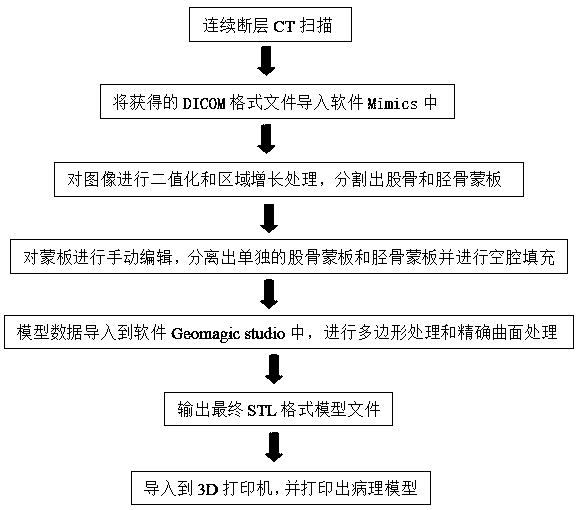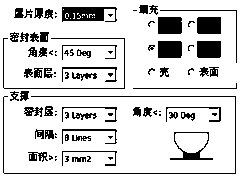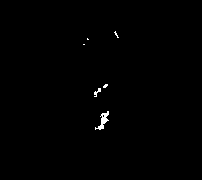Method for preparing skeleton model of deformed knee joint based on 3D printing technique
A 3D printing and bone model technology, applied in the medical field, can solve problems such as inability to complete surgery, increase operation time, and time-consuming, so as to improve communication effect, reduce operation time, and reduce operation risk.
- Summary
- Abstract
- Description
- Claims
- Application Information
AI Technical Summary
Problems solved by technology
Method used
Image
Examples
Embodiment Construction
[0025] Below in conjunction with accompanying drawing, specifically illustrate the method for making the deformed knee bone model based on 3D printing:
[0026] 1. Continuous tomographic CT scanning is performed on the patient. The scanning position is the patient’s supine position and lying down naturally, the knee joint is naturally straightened, and the patella points directly upward to prevent errors caused by rotation. The scanning position is about 160mm from the articular surface of the distal femur , about 50mm down to the articular surface of the distal femur;
[0027] 2. Import the obtained DICOM 3.0 format file into the interactive medical image processing software Mimics, and select the bone window mode for image processing. Since the minimum gray value of bone tissue is generally greater than 1250, the maximum gray value of soft tissue is generally less than 1250. 1249, usually set the grayscale display range from 1031 to 1858;
[0028] 3. Carry out accurate thre...
PUM
 Login to View More
Login to View More Abstract
Description
Claims
Application Information
 Login to View More
Login to View More - R&D
- Intellectual Property
- Life Sciences
- Materials
- Tech Scout
- Unparalleled Data Quality
- Higher Quality Content
- 60% Fewer Hallucinations
Browse by: Latest US Patents, China's latest patents, Technical Efficacy Thesaurus, Application Domain, Technology Topic, Popular Technical Reports.
© 2025 PatSnap. All rights reserved.Legal|Privacy policy|Modern Slavery Act Transparency Statement|Sitemap|About US| Contact US: help@patsnap.com



